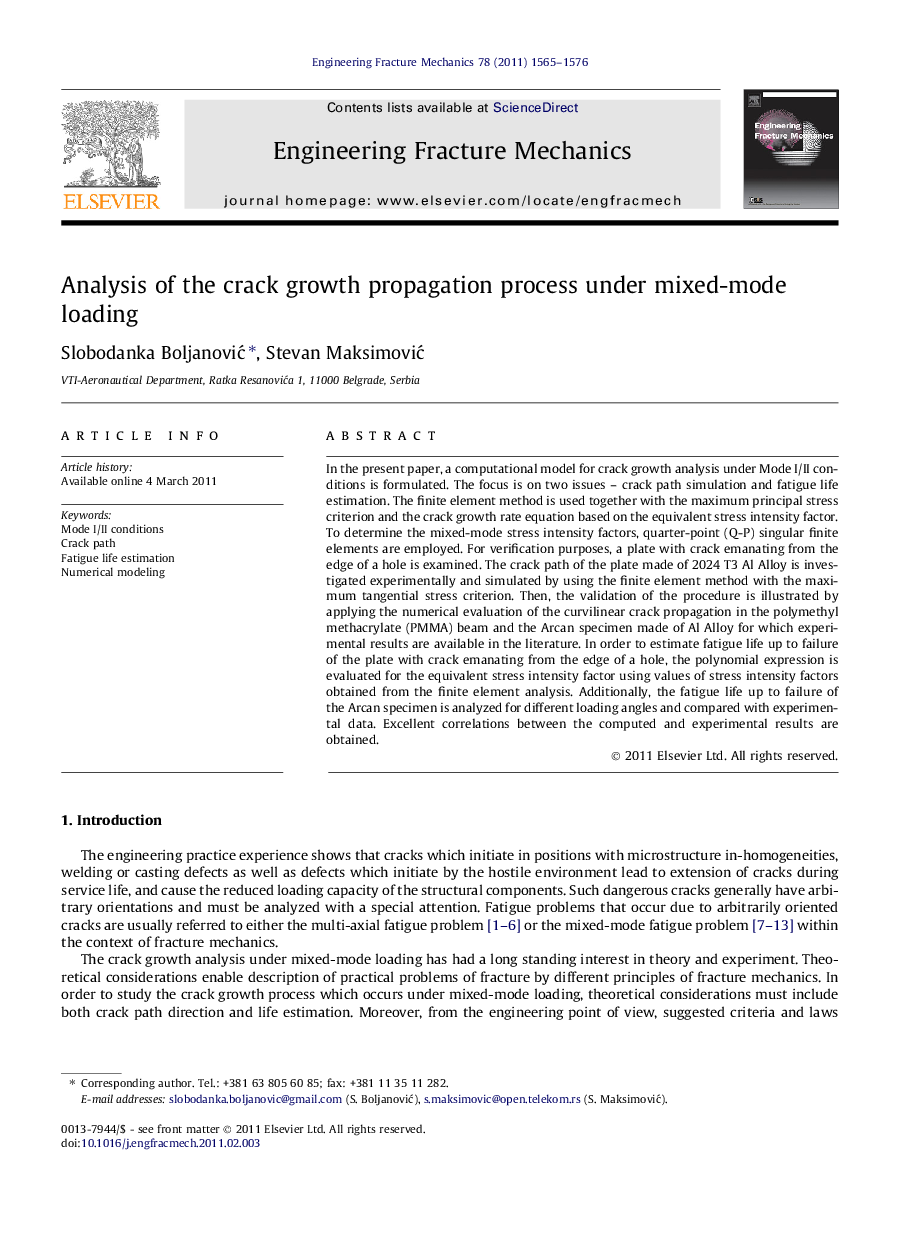| Article ID | Journal | Published Year | Pages | File Type |
|---|---|---|---|---|
| 771131 | Engineering Fracture Mechanics | 2011 | 12 Pages |
In the present paper, a computational model for crack growth analysis under Mode I/II conditions is formulated. The focus is on two issues – crack path simulation and fatigue life estimation. The finite element method is used together with the maximum principal stress criterion and the crack growth rate equation based on the equivalent stress intensity factor. To determine the mixed-mode stress intensity factors, quarter-point (Q-P) singular finite elements are employed. For verification purposes, a plate with crack emanating from the edge of a hole is examined. The crack path of the plate made of 2024 T3 Al Alloy is investigated experimentally and simulated by using the finite element method with the maximum tangential stress criterion. Then, the validation of the procedure is illustrated by applying the numerical evaluation of the curvilinear crack propagation in the polymethyl methacrylate (PMMA) beam and the Arcan specimen made of Al Alloy for which experimental results are available in the literature. In order to estimate fatigue life up to failure of the plate with crack emanating from the edge of a hole, the polynomial expression is evaluated for the equivalent stress intensity factor using values of stress intensity factors obtained from the finite element analysis. Additionally, the fatigue life up to failure of the Arcan specimen is analyzed for different loading angles and compared with experimental data. Excellent correlations between the computed and experimental results are obtained.
